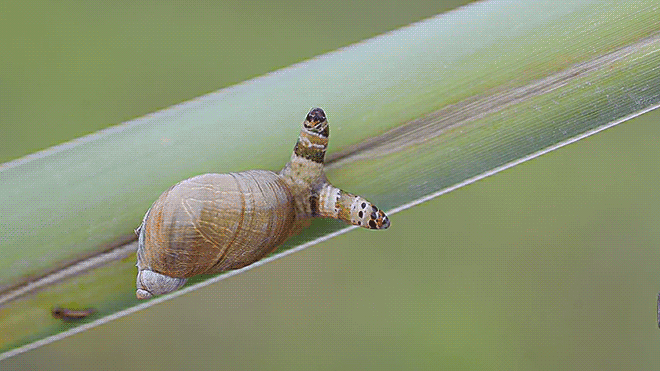

(If the eyestalk happens to rupture on its own, the faux caterpillar will spill out onto a leaf and pulsate for some time before drying out. But because birds don’t typically go after snails-only when their eyeballs look like caterpillars-they’ll take off without eating the rest of the body. Tomasz WesołowskiĪnd when the reckoning comes, the snail ends up with its eyes plucked out. It’s probably using chemicals, but how it’s able to pull off this incredible feat remains a mystery, as do the chemical secrets of any number of other zombifying parasites (though scientists are making progress in decoding the compounds that the Ophiocordyceps fungus uses to assume control over ants).Īn amber snail wondering why it even bothers to get out of bed in the morning. So once the Leucochloridium has sufficiently developed in the eyestalk, it begins manipulating the behavior of its host, forcing it out into the many dangers of the light of day, where predators swarm and the sun rapidly desiccates. The worm, though, has a problem: Snails are largely nocturnal, and passerine birds, which hunt by sight, most certainly are not. (These are the kinds of birds with three toes facing forward and another facing backward, what you’d typically find in your backyard, unless you live in Antarctica and your neighborhood is lousy with penguins.) And what the world looks like to a snail with wormy eyes is anyone's guess, but I'm willing to bet it's somewhat dizzying. It so greatly swells the tentacle that the snail is no longer capable of retracting it, so the host is left with a massive strobing eye of larvae that looks mighty delicious to passerine birds. Notice the thin trailing bit, which would lead back to the sporocyst in the snail's liver. (Specifically, amber snails-like many other mind-controlling parasites, it’s highly species-specific, that is, it’s unable to manipulate the behavior of more than one species.) But while science has known about Leucochloridium for more than a century, it was only in 2013 that biologist Tomasz Wesołowski of Poland’s Wrocław University confirmed the worm is indeed capable of manipulating its snail hosts. It’s an existence that’s as brilliant as it is strange.


The worm breeds in the bird’s guts, releasing its eggs in the bird’s feces, which are happily eaten up by another snail to complete the whole bizarre life cycle. The worm then mind-controls its host out into the open for hungry birds to pluck out its eyes. It’s called Leucochloridium, and it’s a parasitic worm that invades a snail's eyestalks, where it pulsates to imitate a caterpillar (in biology circles this is known as aggressive mimicry-an organism pretending to be another to lure prey or get itself eaten). Mother Nature, you see, has cooked up an even more sadistic punishment for the humble snail. Even if you live in Florida, which is overrun with giant foot-long snails that are devouring houses, please do not dispatch them with salt. It’s a horrible death: The salt draws water out of the creature until it perishes from dehydration. One of the crueler tortures to bestow on a snail is the salt shower, as the behaviorally challenged kid who grew up down the street from you could attest.


 0 kommentar(er)
0 kommentar(er)
